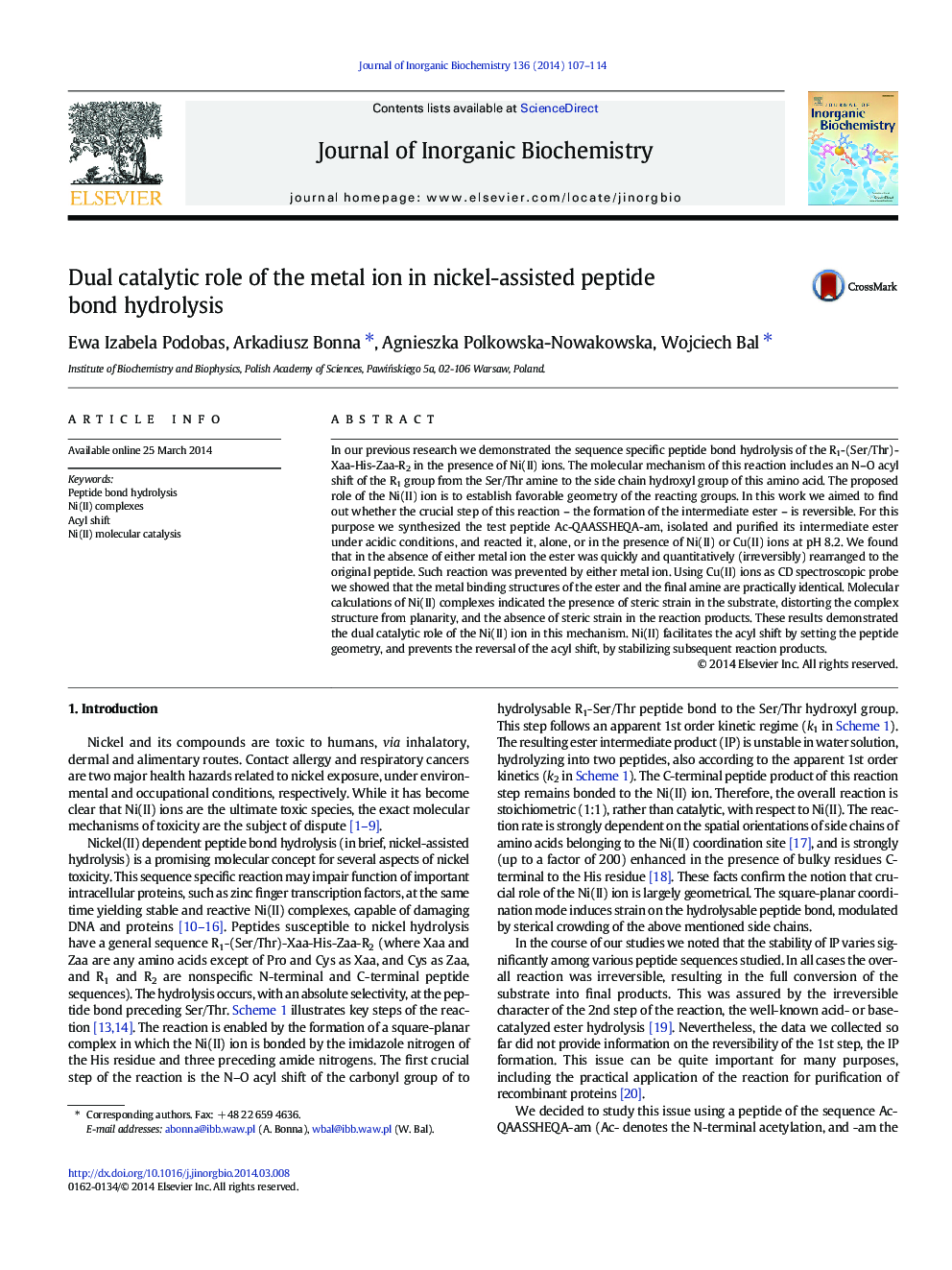| Article ID | Journal | Published Year | Pages | File Type |
|---|---|---|---|---|
| 1317381 | Journal of Inorganic Biochemistry | 2014 | 8 Pages |
In our previous research we demonstrated the sequence specific peptide bond hydrolysis of the R1-(Ser/Thr)-Xaa-His-Zaa-R2 in the presence of Ni(II) ions. The molecular mechanism of this reaction includes an N–O acyl shift of the R1 group from the Ser/Thr amine to the side chain hydroxyl group of this amino acid. The proposed role of the Ni(II) ion is to establish favorable geometry of the reacting groups. In this work we aimed to find out whether the crucial step of this reaction – the formation of the intermediate ester – is reversible. For this purpose we synthesized the test peptide Ac-QAASSHEQA-am, isolated and purified its intermediate ester under acidic conditions, and reacted it, alone, or in the presence of Ni(II) or Cu(II) ions at pH 8.2. We found that in the absence of either metal ion the ester was quickly and quantitatively (irreversibly) rearranged to the original peptide. Such reaction was prevented by either metal ion. Using Cu(II) ions as CD spectroscopic probe we showed that the metal binding structures of the ester and the final amine are practically identical. Molecular calculations of Ni(II) complexes indicated the presence of steric strain in the substrate, distorting the complex structure from planarity, and the absence of steric strain in the reaction products. These results demonstrated the dual catalytic role of the Ni(II) ion in this mechanism. Ni(II) facilitates the acyl shift by setting the peptide geometry, and prevents the reversal of the acyl shift, by stabilizing subsequent reaction products.
Graphical abstractThe dual catalytic role of Ni(II) ions consists of (i) arranging steric strain on the susceptible peptide bond, and (ii) stabilizing the intermediate and final reaction products.Figure optionsDownload full-size imageDownload as PowerPoint slide
